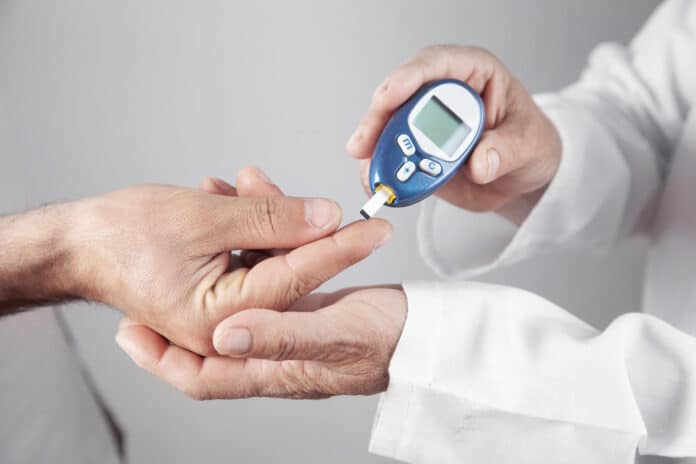Groundbreaking research in Nature Genetics unveils the biggest-ever study on the genetics of random blood sugar levels that fluctuate throughout the day and night. This extensive study involved nearly half a million people from diverse backgrounds. It has identified new genetic variations that impact these random blood sugar levels.
The research team, led by Professor Inga Prokopenko at the University of Surrey, conducted this study in collaboration with the Meta-Analysis of Glucose and Insulin-related Traits Consortium (MAGIC) and analyzed data from 17 primary research studies, including the UK Biobank.
One significant finding from this research is that how individuals respond to drugs, particularly GLP-1R agonists, commonly used for treating type 2 diabetes and obesity, can depend on specific DNA variations in the target gene, GLP1R.
Additionally, this study has shed light on a groundbreaking discovery: it is the first to reveal that type 2 diabetes can directly lead to lung complications. This study, the most significant genetic investigation into the connection between genes, blood sugar levels, and health outcomes, suggests that lung problems should now be considered a potential complication of type 2 diabetes.
The study, which looked at genetics and gene activity, revealed the vital role of the digestive system, especially the small intestine, ileum, and colon, in controlling blood sugar levels. This complements knowledge of the pancreas’ involvement in maintaining blood sugar levels.
Professor Inga Prokopenko, a leading expert at the University of Surrey, stated that this study is incredibly significant. It involves over a hundred scientists from around the world. It provides fresh insights into the genetics of blood sugar levels and type 2 diabetes. These findings can help us prevent complications of type 2 diabetes, including lung issues.
Examining individual DNA differences and their impact on how people respond to GLP-1R agonists can improve treatment approaches for those with this condition.
People with type 2 diabetes are more prone to lung issues like restrictive lung disease, fibrosis, and pneumonia. It was uncertain if diabetes directly caused these problems or if other factors were responsible. Researchers considered factors like smoking and inactivity and used Mendelian randomization to check if high blood sugar levels were linked to lung issues. They conducted lung function tests.
The results showed that high blood sugar levels in type 2 diabetes directly harmed lung function. For instance, going from an average blood sugar level of 4 mmol/L to 12 mmol/L could cause a 20% drop in lung capacity and function.
Respiratory diseases rank third in causes of death in England, with hospital admissions of such illnesses doubling in England and Wales over two decades. These findings stress the importance of healthcare professionals monitoring lung health in people with type 2 diabetes and taking early action to treat any issues, potentially saving lives.
This study discovered that parts of the digestive system, like the ileum and colon, play a role in controlling blood sugar. When we eat, food begins in the duodenum (the start of the small intestine), where it mixes with juices from the pancreas, liver, and gallbladder. The jejunum and ileum break down food and absorb nutrients into the bloodstream.
The colon, the large intestine, absorbs water and electrolytes from undigested food and houses a community of bacteria called the gut microbiome. This research linked the gut microbiome to managing glucose levels. It highlighted specific bacteria like Collinsella and Lachnospiraceae-FCS020, which produce glucose from lactose and galactose.
Dr. Vasiliki Lagou from the team emphasized that their study revealed that high blood sugar in type 2 diabetes can directly harm the lungs. They hope this finding will increase awareness among healthcare professionals, leading to earlier diagnosis and treatment of lung problems.
Dr. Ayse Demirkan, another expert from the University of Surrey, explained that their research underscores the vital role of the gastrointestinal tract, including the ileum and colon, in blood sugar control for type 2 diabetes, in addition to the pancreas. They also found connections between glucose regulation and specific gut bacteria.
Type 2 diabetes risk factors include age, genetics, ethnicity, and body weight.
Journal Reference:
- Lagou, V., Jiang, L., Ulrich, A. et al. GWAS of random glucose in 476,326 individuals provide insights into diabetes pathophysiology, complications, and treatment stratification. Nature Genetics. DOI: 10.1038/s41588-023-01462-3.
